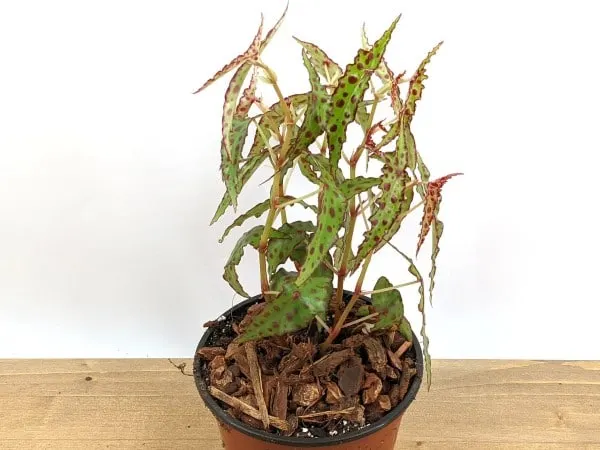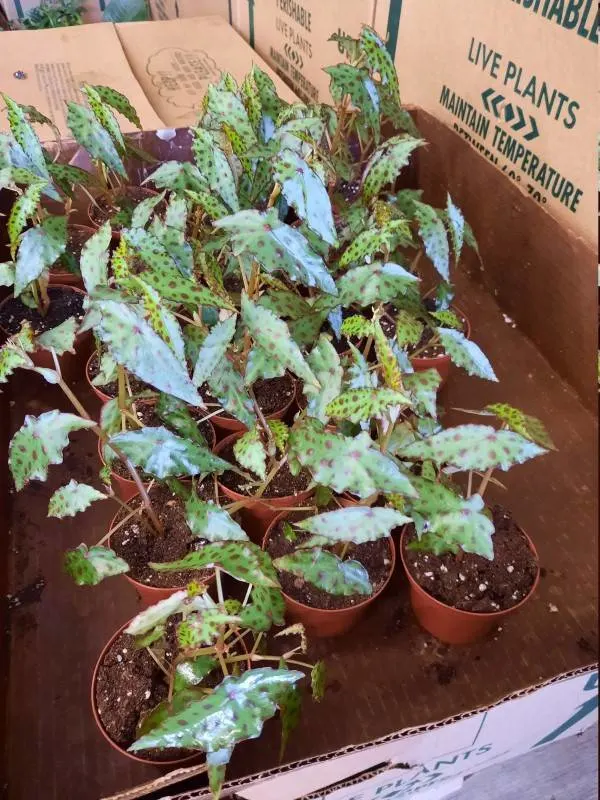Begonia Amphioxus is a rare plant that a few people choose with a very specific plant taste. They are quite different from other begonias. They have bushy foliage and grow on the ground in their natural habitat.
These terrestrial plants have an eye-catching pattern of leaves and produce flowers once or twice a year. The combination of foliage and flowers makes one of the most sensational sights you will ever see.
Amphioxus is the name derived from two different worlds, “Amphi” and oxys,” meaning pointy on the edges. They are also known as butterfly plants because of the patterns on their leaves. They move with the wind, similar to a butterfly moving its wings in the air.

Characteristics of Begonia Amphioxus
There are a lot of ornamental features that these plants offer, so sit back and enjoy the characteristics of these mesmerizing plants. Please read the whole article carefully to better understand your plant’s growth habit and what it has to offer.
Foliage
They have vivid green leaves with crimson markings. The pattern of the leaves makes them similar to butterfly wings. Their captivating leaves can make you fall in love with them in no time, so make sure that you grow them with good care for healthy and strong growth.
Flowers
The flowers are purple or white in color, but they only show up twice a year if you provide the plant with ideal growing conditions. They are ornamentally insignificant.
Height and width
They can grow up to 15 to 30cm tall and 10 to 31cm wide. The plant’s growth size is average, so you don’t need to worry about making some extra space in your garden for your plant to feel comfortable. The leaves of the plants can grow 3 to 5 cm long and only a couple of cm wide at maximum.
Origin
These plants were first discovered in 1984, growing on the tropical lands of Borneo. We have discussed the caring tips later in this article to help you replicate the environmental conditions these plants naturally live in.
Air purifier
Similar to other begonias, these plants have the ability to purify the air by removing all the toxic elements in it. The user can breathe fresh, clean air every day if he decides to grow these plants inside their house.
Toxicity
They contain insoluble oxalates that can be toxic to humans and pets. Swollen lips and throat are one of the symptoms of plant leaves ingestion. Please keep your plant away from your pets and children as it can be life-threatening if consumed.

Caring tips for Begonia Amphioxus
These plants are not easy to care for, but we have provided you with the best caring tips to help you grow your plant ideally.
Sunlight
Place them in bright, indirect sunlight and watch them thrive and flourish like none other. Avoid direct sunlight as it can burn the leaves, so we advise you to place them near a north-facing window where the light gets filtered before reaching the plant’s leaves. You can also use artificial lights if you have too dim lighting inside your house.
Soil
Combine peat and regular houseplant mix to prepare the soil for your precious plant. We recommend adding oyster shells, eggshells, or limestone chips for the best results.
They will help maintain the pH of the soil, allowing the plant to produce vibrant foliage colors. The optimum pH level for these plants is 6.1 to 7.5.
Water
Water your plant three times a week when it’s actively growing in the summer season. Reduce it to once per week in the winter. Overwatering can lead to leaf rot and fungus, so check the soil before watering the plant again. Keep in mind that they should only be watered when the top half of the soil is dry.
Temperature
Placing them in a warm, humid temperature would be ideal for these plants. A temperature range from 50 to 85 degrees Fahrenheit is preferred, making sure that the temperatures remain stable. Extreme climate conditions are not welcomed by these plants well.
Humidity
They require a high humidity level to grow at their maximum speed. Keep the humidity level between 60 to 80 percent with the help of a humidifier to improve the growth rate of your plant. You can also use misting, which is an inexpensive alternate method of increasing the moisture in the air.
Fertilizer
These plants require more feeding than your regular houseplant. Feed them liquid fertilizer diluted to ¼ strength once every two weeks in the growing season to improve its growth rate.
Pruning
Pruning the plant once a year maintains its shape and size. It also helps the plant to stay healthy for a long time. Please remove dead or overgrown leaves as soon as you identify them.
Pests and other diseases
Thrips are a common pest that can damage your plant severely. You can easily get rid of them by washing your plant with insecticidal soap.
Propagating Begonia Amphioxus
There are a lot of different methods by which you can easily propagate your plant. These include stem cuttings, leaf cuttings, seeds, softwood cuttings, or simple layering. We recommend using stem cuttings as it is one of the most economical propagation methods.
Following are some tips to properly perform the cutting method.
- Choose a healthy stem about 5 to 6 cm long and cut it with a sterile knife or scissors.
- Please do not remove the leaves present at the top of the stem.
- Treat the cut area with water and rooting hormone to speed up the root development process.
- Please make sure that the leaves are not drowned in water when you place the cuttings inside.
- Plant the cutting in soil once the roots are developed.
Conclusion
Begonia Amphioxus is an evergreen flowering plant with mesmerizing foliage colors. The crimson marking captures every plant lover’s heart with its beauty. They can completely change the whole outlook of your room if you use them in hanging baskets or terrariums.
